Characteristics of several types of dope and the rules for growing these flowers
Datura is an annual plant whose height reaches one meter. This original flower is very often used to decorate flower beds and lawns.
Content:
- Description of the plant
- Features of Indian dope
- The originality of an ordinary dope
- The originality of a harmless dope
- Care features
- Growing a plant
Description of the plant
This flower is characterized by:
- The presence of a taproot. Datura flower has forked-branched stem, which is characterized by smoothness and simplicity.
- This flower has rather large leaves, which are characterized by a sequence, and also have a pointed top and are characterized by notched serration.
- The color of the leaves of this flower is also unusual - the bottom is light green, and the top is dark green.
- The flowers of this plant have a rather pronounced smell. They are located on pedicels, which are characterized by fluffiness and straightness, and also have rather large dimensions. Flowers can bloom only in the evening.
- This flower can start blooming in June and end in October. The flowers of this plant in their shape resemble a bell.
- Also, this flower has fruits that are characterized by a spherical or ovoid shape. The fruits of the plant have thorny thorns on all sides. When ripe, the fruits open with four valves.
- The seeds of this flower are small. They are also characterized by their black color and smooth surface.
Datura flower has several types. The most common of them are Indian dope, harmless and ordinary.
Features of Indian dope
For the first time, Indian dope was cultivated in Asia.
This plant belongs to the category of perennial:
- Its height is about 1.5 meters.
- This plant is characterized by a high level of branching.
- The flowers of this plant are characterized by the presence of a white corolla, the length of which is about 20 centimeters.
- Datura Indian flowers are directed upwards.
- Such their orientation resembles a candle in its shape.
- It has petiolate leaves.
- The leaves of this flower are characterized by large dimensions.
- They have fairly asymmetrical plates and a slightly wavy or solid edge.
Datura flowers can have different colors: white, purple, yellow, purple.
Some subspecies of this plant may have a purple double perianth, which is characterized by the presence of white spots. Flowers, roots, stems and leaves of this plant are poisonous. This plant is capable of reaching a height of 1.5 meters, but in an area with a temperate climate, Indian dope is much lower. This flower bears fruit in the shape of a box, which has a spherical shape.
It is characterized by the presence of soft spikes and a large number of irregular cracks. The seeds of this plant are bright yellow in color. They are planted indoors in March-April, and outdoors in May.Indian dope requires only soft and loose soil, but otherwise it is quite unpretentious.
When caring for this plant, you need to be very careful, as it is quite poisonous.
The originality of an ordinary dope
Despite the fact that the flower is called ordinary, it is quite original.
This flower is characterized by:
- The presence of a tap root system.
- The distinctive features of this system are power and branchiness.
- The height of the flower is between 50 and 120 centimeters.
- This plant has a bare stem, which is characterized by upright resistance and forked branching.
- This flower has regular and large leaves.
- They have a pointed top and are characterized by a notched serration.
- The color of the leaves of this plant is also original - the bottom is light green, and the top is dark green.
The flowers of this plant are characterized by a pronounced aroma.
They are located singly in the forks of the stem, and also have rather large dimensions. The originality of this plant is given by the presence of a white corolla. The fruit of this flower is a ball-shaped box. It has soft thorns and a large number of seeds. After this box is ripe, it cracks. Datura seeds are small in size, black in color and have a smooth surface.
Ordinary dope refers to the category of annual plants. The common dope begins to bloom in early June, and ends in September. Corollas of this flower are characterized by a pronounced aroma and the presence of wide-angle bending lobes.
The length of the corolla tube, which is characterized by its narrowness, can reach 5-10 centimeters.
It is best to grow the original dope on a dung heap or compost. In favorable soil, this plant is capable of self-sowing propagation. The plant begins to bloom in June and ends in September. They are characterized by a white color, which gives the intoxication beauty and originality.
The originality of a harmless dope
The name of this plant speaks for itself. This dope is completely harmless.
Harmless dope is characterized by a high level of branching:
- This flower has petiolar leaves, which are characterized by large dimensions, asymmetry of the plate, slightly wavy or solid edge.
- This plant is characterized by the presence of a tap root system, which is characterized by power and branching.
- This plant has a bare stem, which is characterized by upright resistance and forked branching.
- Its height ranges from 50 to 120 centimeters.
- This datura has petioled leaves, which are characterized by large dimensions, ovate, slightly wavy or solid edge.
- The color of the leaves of dope is also original - the bottom is light green, and the top is dark green.
Harmless Datura belongs to the category of annual plants.
It begins to bloom in June and ends in September. The corolla of the plant is characterized by a pronounced aroma and the presence of wide-angle folding lobes. The fruit of this plant is a ball-shaped box. After this box is ripe, it cracks. It has soft spikes and is also covered with a large number of irregular cracks. The seeds of this plant are black in color. They are planted indoors in March-April, and outdoors in May.
The corolla of the plant is characterized by aroma and the presence of wide-angle bending blades. The length of the narrow and long corolla tube can reach 5-10 centimeters.
The flowers of this plant are characterized by a pronounced aroma.
They are located on straight and fluffy pedicels, and are also quite large in size. Flowers bloom with the onset of evening.This plant blooms in June and ends in October. Datura flowers in their shape resemble bell.
Care features
Datura flower does not like shade, so it must be grown in a sunny area. At the same time, when choosing a place for this plant, it is necessary to give preference to an area that is completely protected from the winds.
When watering this plant, you must choose hard water.
This will contribute to the correct and full flowering of dope. Otherwise, the flowers will be underdeveloped, and the flowering period of this plant is much shorter. In case if there is water for irrigation, which is characterized by softness, it is necessary to make one watering per summer, for which lime milk is used. Watering the plant must be carried out as the soil dries.
This plant does not need to provide a warm winter:
- Since this can negatively affect its growth (the plant will stretch a lot in height, as a result of which it will lose its attractiveness).
- With a warm wintering of dope, its shoots will become rather weak, which will negatively affect not only its appearance, but also flowering.
The active flowering of this plant begins in the summer. To ensure long-term and high-quality flowering, it is necessary to regularly remove the faded flowers of dope. During the flowering period, this plant requires frequent watering. It is necessary to carry out this procedure every day in the morning and in the evening: in the morning - before sunrise, and in the evening - after sunset. If it becomes necessary to collect good Datura seeds for the next year, then it is necessary to remove them from the fruits that remain in the place of the first flowers. In order for the seeds not to fall to the ground, special bags are put on the fruit-box, which absolutely do not interfere with the development of the seeds and at the same time they are not lost.
Datura flowers appear only on young shoots, therefore, for the full bloom of dope, it is necessary to periodically cut it off.
An important aspect in the care of dope is his feeding... This action must be performed once a week. A variety of mineral fertilizers are used to feed the plant.
Caring for this plant is quite simple. It requires the following procedures:
- Watering.
- Top dressing.
- Pruning.
- Removal of faded flowers.
- The right choice of growing place.
If these requirements are met, very good results can be achieved during the cultivation of this plant.
Growing a plant
Growing Datura is a relatively simple process that even a novice gardener can do. To grow it, it is best to choose a pile of manure or compost.
This plant propagates with the help of seeds:
- They must be landed in the month of March.
- For this, plastic containers are selected.
- At the bottom of the containers, it is necessary to pour a thin layer of peat, which is covered with a mixture of garden soil with sand.
- Seed rise occurs within ten days.
- In order to protect the plant from fungal infection, a manganese solution is added to the seedling tray.
- The soil should be moist, but stagnant water should be avoided. This can lead to root rot.
This plant is planted in the ground at the end of April - beginning of May.
In this case, the distance between the dope seedlings should be at least one meter. This is due to the fact that if a plant is planted close to each other, then it can have rather weak bushes and flowers. With a dense planting of a plant, it may not bloom at all. Datura must be planted every year in black soil.
Dope flower can be amazed at such a diseaselike rot. It appears as a result of excessive soil moisture. At the first sign of this disease, it is necessary to do everything possible to drain the soil.Datura can also be affected by pests such as spider mites and whiteflies.
When these pests appear, the dope bush must be treated with appropriate insecticides.
Plant care is very simple. If you follow all the rules of care, you can get a fairly beautiful plant that will embellish any landscape design. When choosing a dope, it is best to give preference to non-poisonous species that do not have a negative effect on the human body. If you need to scare away various rodents and rats with this plant, then Indian dope would be an ideal option.
More information can be found in the video.



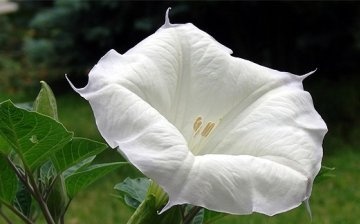
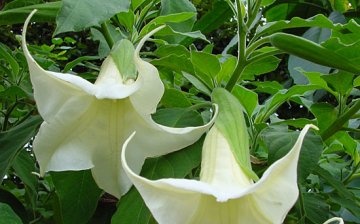
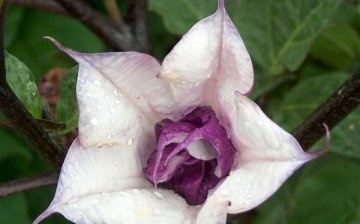
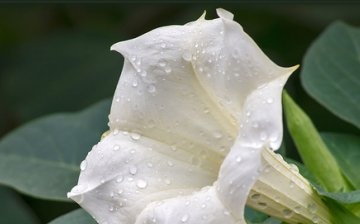
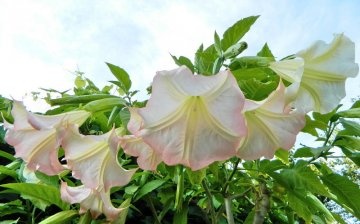
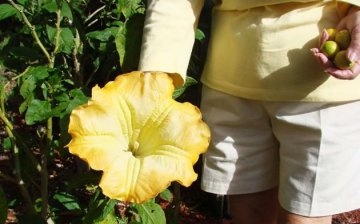
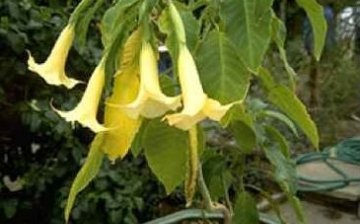







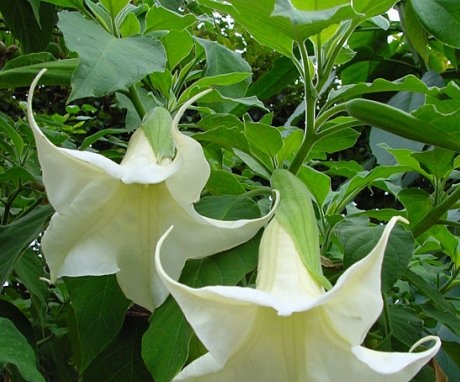
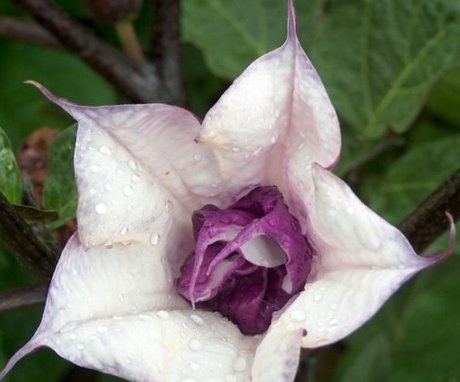
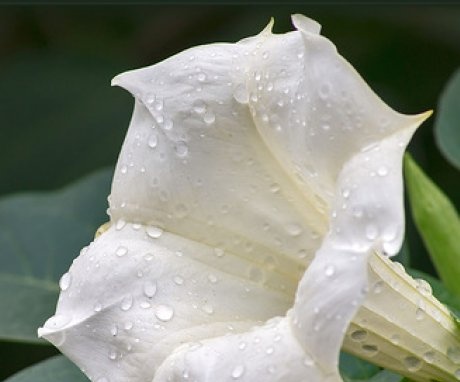
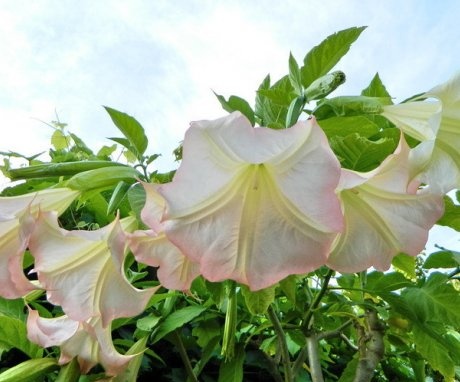
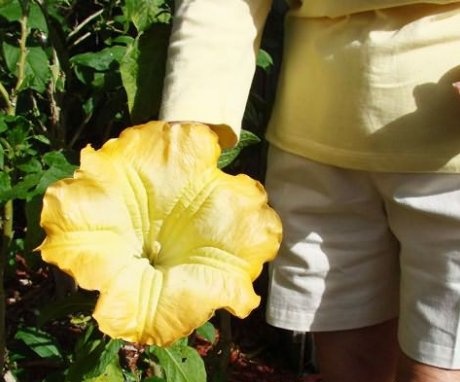
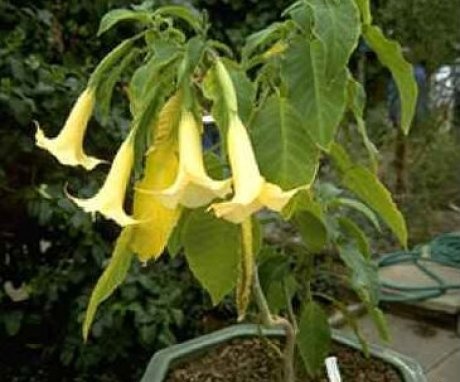
I never would have thought that dope is outwardly such a beautiful plant, but it's interesting, here they write that its smell is very strong, how does it affect a person? Can this plant be grown if there are children at home?